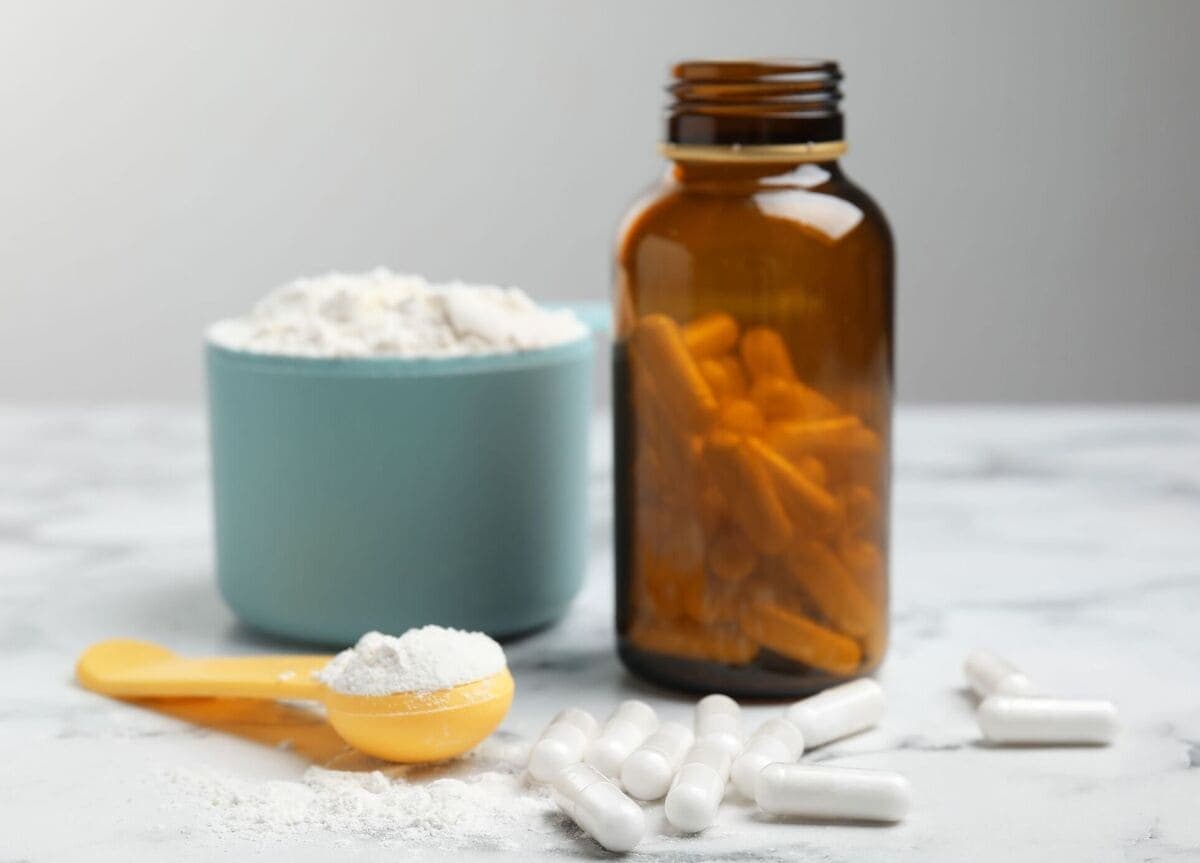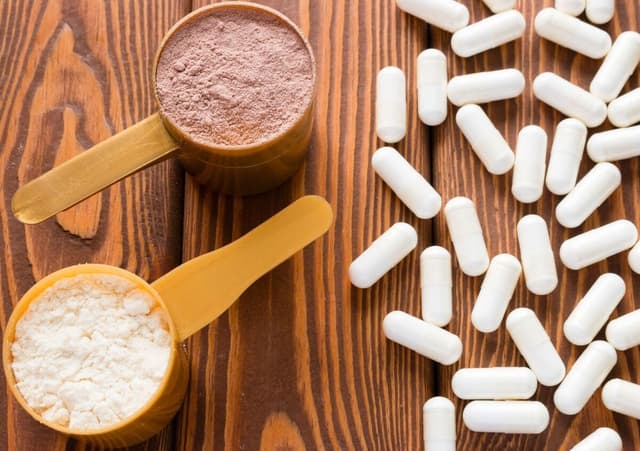Creatine Loading Phase Explained: Is It Worth the Hype?

October 18, 2024
Whether you're a seasoned athlete or just starting your fitness journey, you've likely heard about the best creatine supplements and the concept of a creatine loading phase. But what exactly is the creatine loading phase, and does it live up to the hype? In this comprehensive guide, we'll delve into the science behind creatine loading, explore its benefits and drawbacks, and help you decide if it's the right strategy for you. By the end, you'll have a clear understanding of how to optimize your creatine supplementation for maximum gains.
Understanding the Creatine Loading Phase
What is Creatine?
Creatine is a naturally occurring compound found in small amounts in certain foods and synthesized by the body. It's stored primarily in muscles and used as a quick energy source during high-intensity activities like weightlifting and sprinting. Supplementing with creatine has been shown to enhance muscle mass, strength, and exercise performance, making it one of the most popular and researched supplements in the fitness industry.
The Loading Phase Defined
The creatine loading phase involves taking a higher dose of creatine for a short period, typically 20 grams per day divided into 4 doses, for about 5-7 days. This is followed by a maintenance phase of 3-5 grams per day. The primary goal of the loading phase is to saturate your muscle stores with creatine quickly, leading to faster results compared to a standard supplementation regimen.
Benefits of the Loading Phase
- Faster Saturation: Achieve muscle creatine saturation within a week, accelerating the benefits such as increased strength and improved performance.
- Enhanced Muscle Volume: Rapid uptake of creatine can lead to noticeable increases in muscle size due to increased water retention within muscle cells.
- Quick Performance Boost: Athletes may experience enhanced performance in high-intensity workouts sooner compared to gradual supplementation.
Is the Loading Phase Necessary?
While the loading phase can expedite the benefits of creatine, it's not strictly necessary. Research indicates that taking a consistent daily dose of 3-5 grams without a loading phase will eventually lead to full muscle saturation within about three to four weeks. For those who prefer a more gradual approach or are concerned about potential gastrointestinal discomfort from higher doses, skipping the loading phase is a viable option.
Pros and Cons of Creatine Loading
Advantages
- Rapid Results: Achieve the desired creatine levels in muscles quickly, allowing you to experience the benefits sooner.
- Improved Performance: Enhanced muscle strength and endurance can lead to better workout performance and faster muscle growth.
- Convenience for Athletes: Ideal for those preparing for competitions or events where immediate performance enhancement is desired.
Disadvantages
- Gastrointestinal Issues: Higher doses during the loading phase can cause stomach cramps, bloating, and diarrhea in some individuals.
- Increased Cost: Consuming more creatine upfront may lead to higher initial costs, though this is typically offset by the maintenance phase.
- Potential for Dehydration: Higher creatine intake increases water retention in muscles, which may require increased water consumption to stay properly hydrated.
Who Should Consider Loading?
- Competitive Athletes: Those needing rapid performance enhancement for upcoming events.
- Experienced Supplement Users: Individuals familiar with creatine supplementation and comfortable with higher initial doses.
- Those Seeking Quick Results: Anyone eager to experience the benefits of creatine supplementation as soon as possible.
Who Might Avoid Loading?
- Beginners: Those new to supplementation may prefer starting with a lower dose to assess tolerance.
- Individuals with Sensitive Stomachs: Those prone to gastrointestinal issues might find the loading phase uncomfortable.
- Casual Fitness Enthusiasts: If immediate results aren't a priority, a standard supplementation regimen is sufficient.
Choosing the Best Creatine for Your Loading Phase
Types of Creatine Supplements
There are several forms of creatine available on the market, each with its own set of benefits. Understanding these can help you choose the best creatine for your needs.
1. Creatine Monohydrate
- Most Studied: The most researched and proven form of creatine.
- Cost-Effective: Generally the cheapest option available.
- Highly Effective: Known for its ability to enhance muscle mass, strength, and performance.
2. Creatine HCl
- Better Solubility: Dissolves more easily in water, reducing the likelihood of stomach discomfort.
- Smaller Dosage: Requires smaller doses to achieve the same effect as monohydrate.
3. Creatine Ethyl Ester
- Enhanced Absorption: Marketed to have better absorption rates, though research is mixed.
- Less Water Retention: May cause less bloating compared to monohydrate.
Our Top Recommendations

Optimum Nutrition Micronized Creatine Monohydrate Powder
Micronized for easy mixing, supports muscle growth and endurance.
See on Amazon$0.35 per 5g serving

Nutricost Creatine Monohydrate Micronized Powder
Third-party tested, non-GMO, 5g of pure creatine per serving.
See on Amazon$0.2 per 5g serving

NSF Certified, supports muscle power and recovery.
See on Amazon$0.46 per 5g serving

ProMix Creatine Monohydrate Powder
Micronized, additive-free, ideal for performance and recovery.
See on Amazon$0.36 per 5g serving

NOW Foods Sports Nutrition Unflavored
100% pure creatine, GMP certified, boosts strength and endurance.
See on Amazon$0.2 per 5g serving
4. Buffered Creatine (Kre-Alkalyn)
- pH Balanced: Claimed to be more stable in the stomach, reducing breakdown and improving absorption.
- Less Required Dosage: Often requires a smaller dose than monohydrate.
Factors to Consider When Choosing Creatine
- Purity: Look for products with minimal additives and fillers. The best creatine should have a high purity level, ideally 99% or higher.
- Solubility: Better solubility can enhance absorption and reduce the risk of gastrointestinal issues.
- Price: Consider your budget. Creatine monohydrate offers excellent value for money.
- Brand Reputation: Choose reputable brands known for quality and transparency. Check for third-party testing to ensure product integrity.
- Form: Decide which form suits your needs based on factors like absorption rate, stomach sensitivity, and personal preference.
Top Recommendations for the Best Creatine
- Optimum Nutrition Micronized Creatine Monohydrate: Known for its high purity and excellent solubility.
- Creapure Creatine Monohydrate: Manufactured in Germany, renowned for its quality and safety standards.
- Kaged Muscle CreaClear: A buffered creatine that offers enhanced solubility and reduced bloating.
- Transparent Labs StrengthSeries Creatine HMB: Combines creatine with HMB for added muscle preservation benefits.
Implementing the Creatine Loading Phase: A Step-by-Step Guide
Step 1: Determine Your Dosage
- Loading Phase: Take 20 grams of the best creatine daily, divided into 4 doses of 5 grams each.
- Maintenance Phase: After the loading phase, switch to 3-5 grams per day to maintain muscle saturation.
Step 2: Choose the Right Time to Take Creatine
- Post-Workout: Consuming creatine after workouts can enhance muscle uptake and recovery.
- Consistent Timing: Take creatine at the same time each day to establish a routine, whether pre or post-workout.
Step 3: Stay Hydrated
- Increase Water Intake: Supplementing with creatine requires additional water to support muscle hydration and prevent dehydration.
- Daily Water Goal: Aim for at least 3 liters of water per day during the loading phase.
Step 4: Monitor Your Body’s Response
- Track Progress: Keep a journal of your workouts, performance, and any side effects.
- Adjust if Necessary: If you experience gastrointestinal discomfort, consider reducing the dose or switching to a different form of creatine.
Step 5: Maintain Consistency
- Regular Intake: Ensure you take creatine daily, even on rest days, to maintain muscle saturation.
- Combine with Proper Nutrition: Pair creatine supplementation with a balanced diet rich in protein, carbohydrates, and healthy fats for optimal results.
Tips for Maximizing Creatine Benefits
- Pair with Carbs: Consuming creatine with carbohydrates can enhance its uptake into muscles.
- Cycle Creatine: Some users prefer to cycle creatine (e.g., 8 weeks on, 4 weeks off) to maintain its effectiveness and prevent the body from becoming too accustomed to it.
- Combine with Other Supplements: Stack creatine with supplements like beta-alanine or protein powders to further support muscle growth and performance.
Common Mistakes to Avoid
- Skipping the Loading Phase: If you opt for loading, ensure you follow through with the higher dosage to achieve saturation.
- Inconsistent Dosing: Missing doses can delay the benefits of creatine supplementation.
- Ignoring Hydration: Failing to drink enough water can lead to dehydration and reduce the effectiveness of creatine.
Conclusion: Is the Creatine Loading Phase Worth the Hype?
The creatine loading phase offers a strategic approach to quickly saturate your muscles with creatine, leading to faster performance enhancements and muscle gains. While it may come with some initial discomfort and higher costs, the benefits for those seeking rapid results are undeniable. However, it's not a mandatory step—consistent daily supplementation without loading will also yield significant benefits over time.
Choosing the best creatine supplement is crucial to maximize the effectiveness of your loading phase. Opt for high-purity, well-reviewed products like creatine monohydrate or other advanced forms that suit your individual needs. Remember to stay hydrated, monitor your body’s response, and maintain a balanced diet to support your fitness goals.
Ultimately, whether you decide to incorporate a loading phase depends on your personal preferences, fitness objectives, and tolerance to higher doses. If you're aiming for quick results and are comfortable with the regimen, the loading phase can be a valuable tool in your supplementation arsenal. For those who prefer a more gradual approach, a consistent daily dose will still help you achieve the remarkable benefits that make creatine one of the best creatine supplements on the market.






